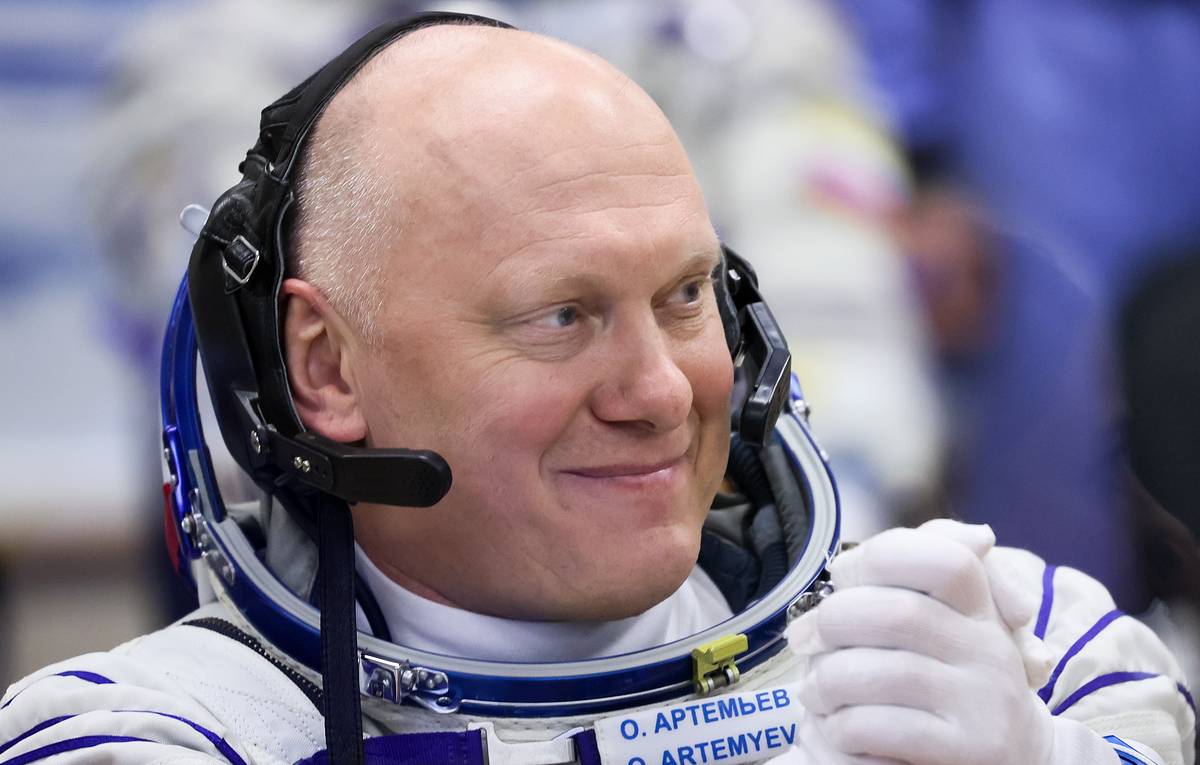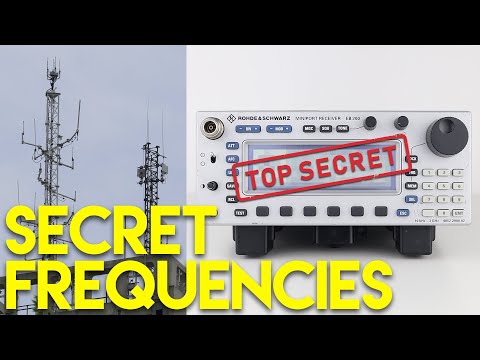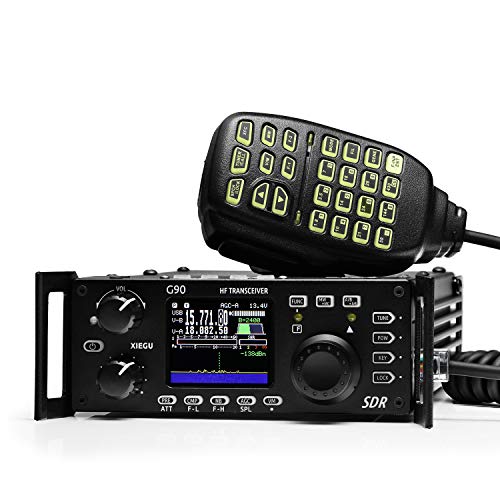
Radioskaf
On July 21, 2022, Russian cosmonaut Oleg Artemyev and European Space Agency astronaut Samantha Cristoforetti are expected to deploy ten small spacecraft (SVSU-55 No. 1 & R-390) from the International Space Station during extravehicular activity (VKD-54) ( SWSU No. 5), SWSU-55 No. 2 (SWSU No. 6), SWSU-55 No. 3 (SWSU No. 7), SWSU-55 No. 4 (SWSU No. 8), SWSU-55 No. 5 “(SWSU No. 9), “SWSU-55 No. 6” (SWSU No. 10), “SWSU-55 No. 7 & R-390” (SWSU No. 11), “SWSU-55 No. 8” (SWSU No. 12), “Tsiolkovsky-Ryazan 1” and “Tsiolkovsky-Ryazan 2” under the program of the space experiment “Radioskaf”.
Satellites of the SWSU series were developed at the Research Institute of Space Instrumentation (part of Roscosmos) and Radioelectronic Systems of the South-Western State University (SWSU). The main developer of the SWSU series satellites is Shilenkov Yegor Andreevich (UB3WCL), Candidate of Technical Sciences, Director of the Center for Space Instrumentation, Advanced Research and Development, Southwestern State University.
On February 17, 2022, the SWSU-55 devices No. 1-6 were delivered to the International Space Station with the Progress MS-19 cargo ship . The satellites SWSU-55 No. 7-8, Tsiolkovsky-Ryazan 1 and Tsiolkovsky-Ryazan 2 were delivered to the International Space Station on June 03, 2022 by Progress MS-20 TGC .
MKA “SWSU-55 No. 1 & R-390” (SWSU No. 5) and “SWSU-55 No. 7 & R-390″ (SWSU No. 11) joint development of scientists from the South-Western State University, Ruzaevsky branch of the Saransk Polytechnic technical school” and schoolchildren from the Center for additional education of children “UNITER” Ruzaevsky district under the leadership of Pashkov Dmitry Aleksandrovich (R4UAB).
The mission of satellites of the SWSU series:
– creation of a peer-to-peer information network. Retransmission and parallel transmission to the ground monitoring station is organized within the network.
– study of the Earth’s magnetic field.
– measurement of radio noise in outer space.
– transmission of photos (SSTV) and voice messages (AUDIO) to radio amateurs around the world. Each satellite will have its own personal phrase, which is translated into 8 different languages.
The Tsiolkovsky-Ryazan 1/2 satellites carry special radio transmitting equipment designed to perform the scientific task of calibrating the sensitivity of the radio telescopes of the Pushchino Radio Astronomy Observatory of the Astro-Space Center of the Physical Institute. P.N. Lebedev of the Russian Academy of Sciences (PRAO ACC FIAN, www.prao.ru ). Also, these satellites can emit specialized radio signals to study the effects of radio wave propagation through the ionosphere using radio receiving equipment, which is supposed to be manufactured at the Russian State Technical University and used as part of the PRAO ACC FIAN radio telescopes.
The space experiment “Radioskaf” is carried out as part of the student program for space education of the youth of Russia and implements projects for the development, preparation and launch of experimental ultra-small spacecraft for various purposes in the process of extravehicular activity of cosmonauts. The director of the experiment “Radioskaf” – RSC “Energia” them. “S.P. Koroleva”.
Frequency SWSU-55 #1 & R-390 (SWSU #5)
- Callsign: RS10S
- Telemetry: 437.050 MHz 1200 bps .AX25 AFSK;
- Payload: 437.050 MHz 1200/2400/4800 bps .AX25 AFSK, SSTV, AUDIO, TEXT;
Frequency SWSU-55 No. 2 (SWGU No. 6)
- Callsign: RS11S
- Telemetry: 437.050MHz 1200 bps .AX25 AFSK;
- Payload: 437.062 MHz 1200/2400/4800 bps .AX25 AFSK, SSTV, AUDIO, TEXT;
Frequency SWSU-55 No. 3 (SWGU No. 7)
- Callsign: RS1S
- Telemetry: 437.050 MHz 1200 bps .AX25 AFSK;
- Payload: 437.075 MHz 1200/2400/4800 bps .AX25 AFSK, SSTV, AUDIO, TEXT;
Frequency SWSU-55 No. 4 (SWGU No. 8)
- Callsign: RS2S
- Telemetry: 437.050 MHz 1200 bps .AX25 AFSK;
- Payload: 437.082 MHz 1200/2400/4800 bps .AX25 AFSK, SSTV, AUDIO, TEXT;
Frequency SWSU-55 No. 5 (SWGU No. 9)
- Callsign: RS3S
- Telemetry: 437.050 MHz 1200 bps .AX25 AFSK;
- Payload: 437.100 MHz 1200/2400/4800 bps .AX25 AFSK, SSTV, AUDIO, TEXT;
Frequency SWSU-55 No. 6 (SWGU No. 10)
- Callsign: RS4S
- Telemetry: 437.050 MHz 1200 bps .AX25 AFSK;
- Payload: 437.087 MHz 1200/2400/4800 bps .AX25 AFSK, SSTV, AUDIO, TEXT;
Frequency SWSU-55 №7 & R-390 (SWGU №11)
- Callsign: RS5S
- Telemetry: 437.050 MHz 1200 bps .AX25 AFSK;
- Payload: 437.1125 MHz 1200/2400/4800 bps .AX25 AFSK, SSTV, AUDIO, TEXT;
Frequency SWSU-55 No. 8 (SWGU No. 12)
- Callsign: RS6S
- Telemetry: 437.050 MHz 1200 bps .AX25 AFSK;
- Payload: 437.000 MHz 1200/2400/4800 bps .AX25 AFSK, SSTV, AUDIO, TEXT;
Frequency Tsiolkovsky-Ryazan 1
- Callsign: RS9S
- Telemetry: 437.050 MHz 1200 bps .AX25 AFSK;
- Payload: 437.025 MHz 1200 bps .AX25 AFSK, SSTV, AUDIO, TEXT;
Frequency Tsiolkovsky-Ryazan 2
- Callsign: RS12S
- Telemetry: 437.050 MHz 1200 bps .AX25 AFSK;
- Payload: 437.0125 MHz 1200 bps .AX25 AFSK, SSTV, AUDIO, TEXT

**google translate
Source:Link
Antenna
Best Antenna Practices
“Donald Clark, KB6QEW, is having some trouble with his SWR. But because of some issues in understanding his situation Dave will answer the best... Read more
ARRL’s Portable Antenna Classics
Portable Antenna Classics Antennas for Operating On the Go! Portable operating is gaining popularity in the Amateur Radio community. For amateurs who... Read more
Basics of building HF/VHF cubical quad antennas
Basics of building HF/VHF cubical quad antenas Read more
Antenna MULTI BEAMING remote Controller by OK2ZAW & DM5XX
The MULTI BEAMING Open STACK controller by RemoteQTH.com is the black box designed to controll the stack match as the multibeaming switch. You can e... Read more
5 element TRI-BANDER – HB35c – Tet Emtron
Description The HB35C utilises the most advanced three-band antenna design developed in recent years. This phase tuned 5 element TRI-BANDER is neither... Read more
HUSTLER 4-BTV [ 40-10m ]
4 Bands • Coverage 40-10m • Bandwidth Full • SWR 1.15:1 • Power 1kW • Traps 25.4mm formers • Tubing 31.75mm... Read more
Maldol HVU-8 Vertical Base Station Antennas HVU-8
Operational Bands 80 meters 40 meters 20 meters 15 meters 10 meters 6 meters 2 meters 70 centimeters Maldol HVU-8 Vertical Base Station Antenna... Read more
SteppIR UrbanBeam Yagi antenna
“We’re champions of the little pistol,” says Mike Mertel, YASME Excellence Award winner and SteppIR Antennas President, as SteppIR Antennas announces... Read more
Review
FT8 and the 6m band [ Club Log ]
by Michael Wells “DXers have adopted FT8 to catch openings on the 6m band in the last year in even greater numbers than on HF. With the often sp... Read more
YAESU FT-991A Colour Screen and Waterfall Demonstration
“We demonstrate the two major new features of the latest version of Yaesu’s “991” series, the FT-991A. Watch the colour screen... Read more
RF Safety – The Doctor Will See You Now! [ ARRL PODCAST ]
https://www.blubrry.com/arrl_the_doctor_is_in/ RF exposure is a concern for every amateur, but did you know that FCC Rules require you to make an... Read more
SunSDR2 PRO Review by RadCom
A powerful HF to VHF transceiver from Expert Electronics The SunSDR2 PRO is the latest transceiver from Russian company, Expert Electronics, and packs... Read more
AR DV1 Communications Receiver Review
AR-DV1 Communications Receiver Review by Peter Waters G3OJV and Justin Johnson G0KSC. The review was carried out at Waters and Stanton, Europe’s... Read more
Yaesu FT-818 Review
“Hello Operators In todays video we review the Yaesu FT-818, in comparison to the Yaesu FT-817 which came before it. The video goes through the... Read more
RSPduo gives outstanding results vs a rig costing 10X the price!
This video, released today by AE5X shows how well the RSPduo performs up against the Flex6300: Read more
The post On July 21, 2022, ten satellites are expected to be launched from the ISS under the Radioskaf program appeared first on QRZ NOW - Ham Radio News.







![HUSTLER 4-BTV [ 40-10m ]](https://qrznow.com/wp-content/uploads/2022/02/4btv-265x168.jpg)


![FT8 and the 6m band [ Club Log ]](https://qrznow.com/wp-content/uploads/2021/03/clublog-2006-2021-1-265x168.png)

![RF Safety – The Doctor Will See You Now! [ ARRL PODCAST ]](https://qrznow.com/wp-content/uploads/2018/12/rf_safety-265x168.jpg)




![ICOM IC- 705 [ New Videos ]](https://qrznow.com/wp-content/uploads/2020/07/ic705-movie-15-265x168.png)


